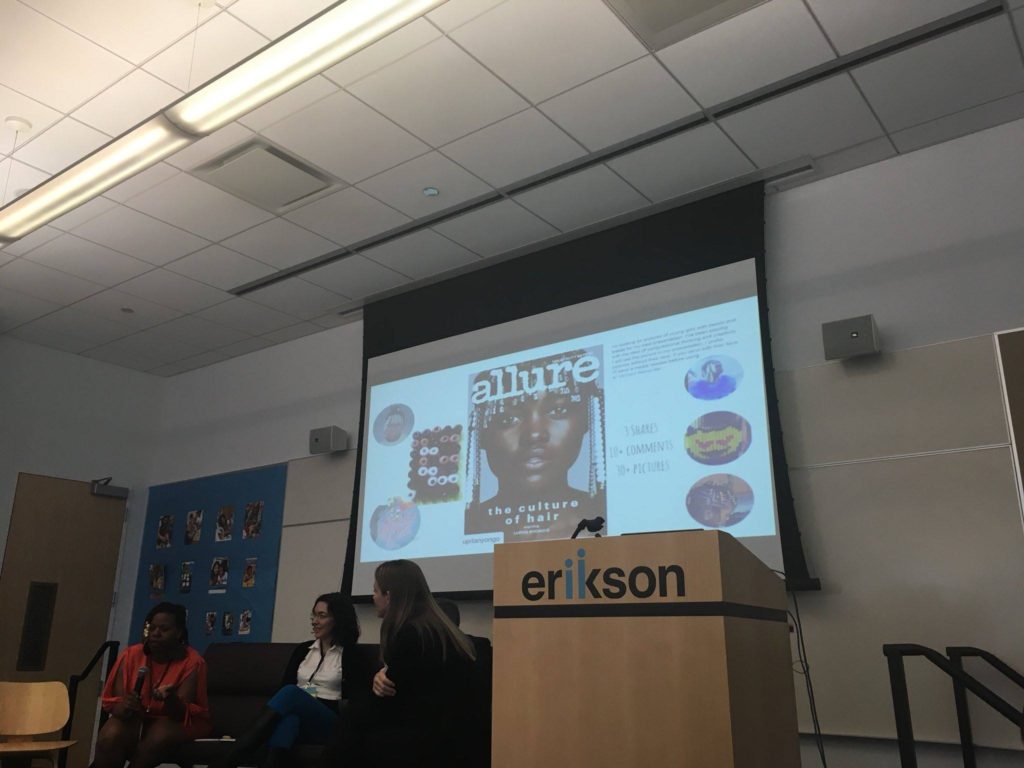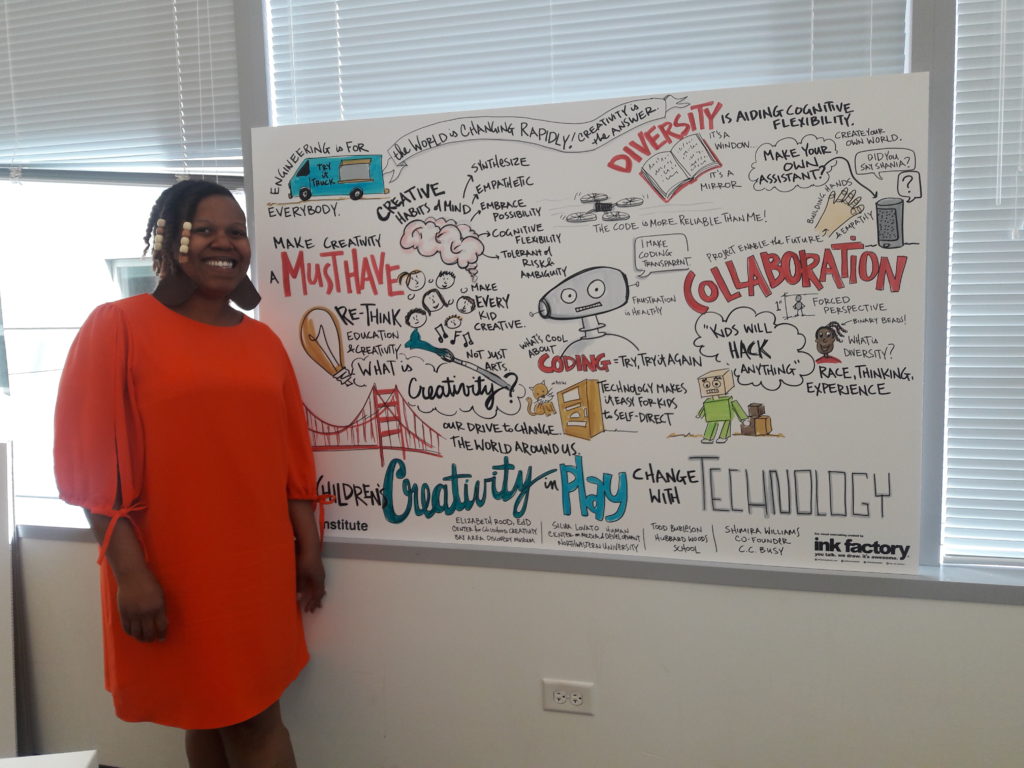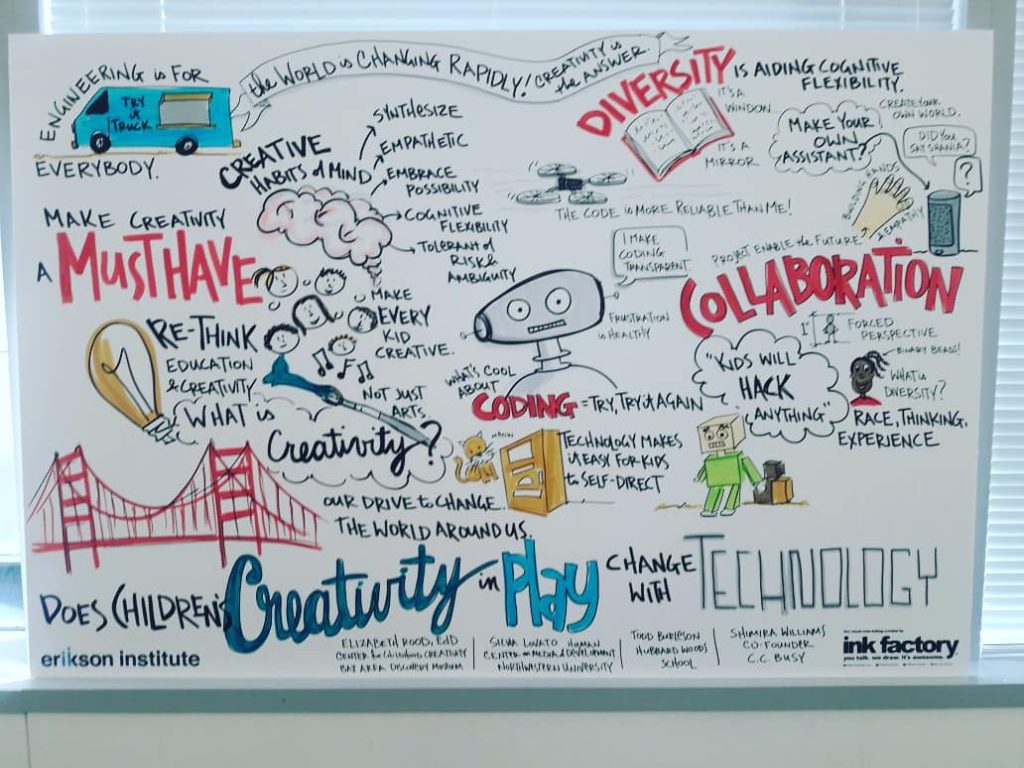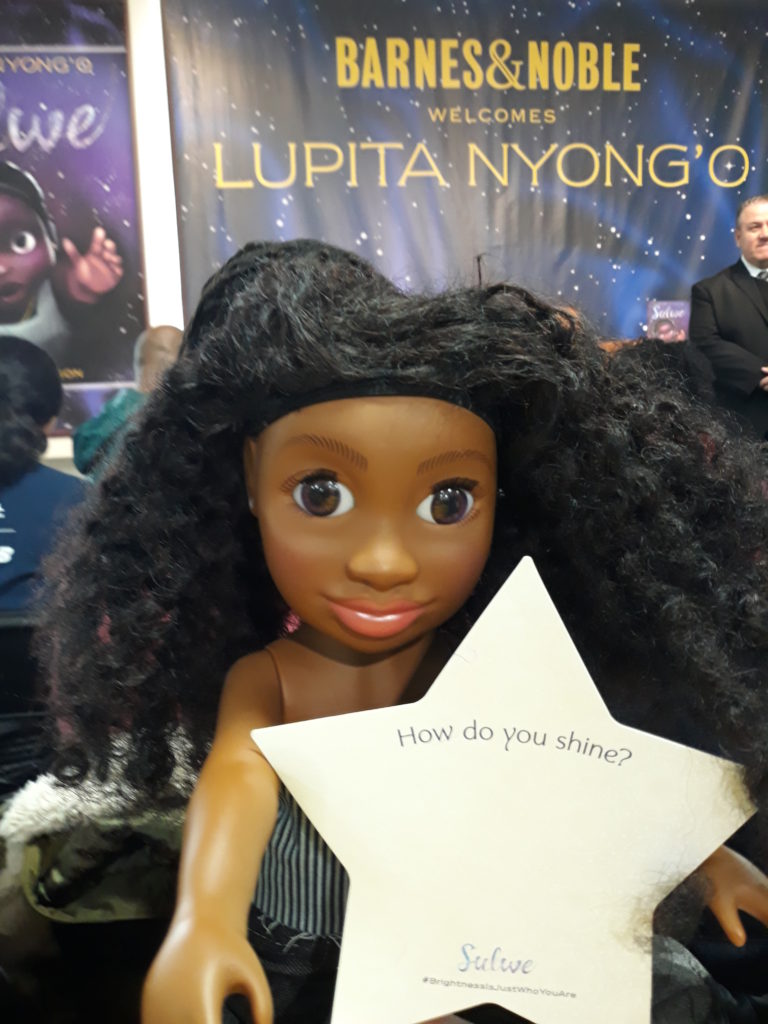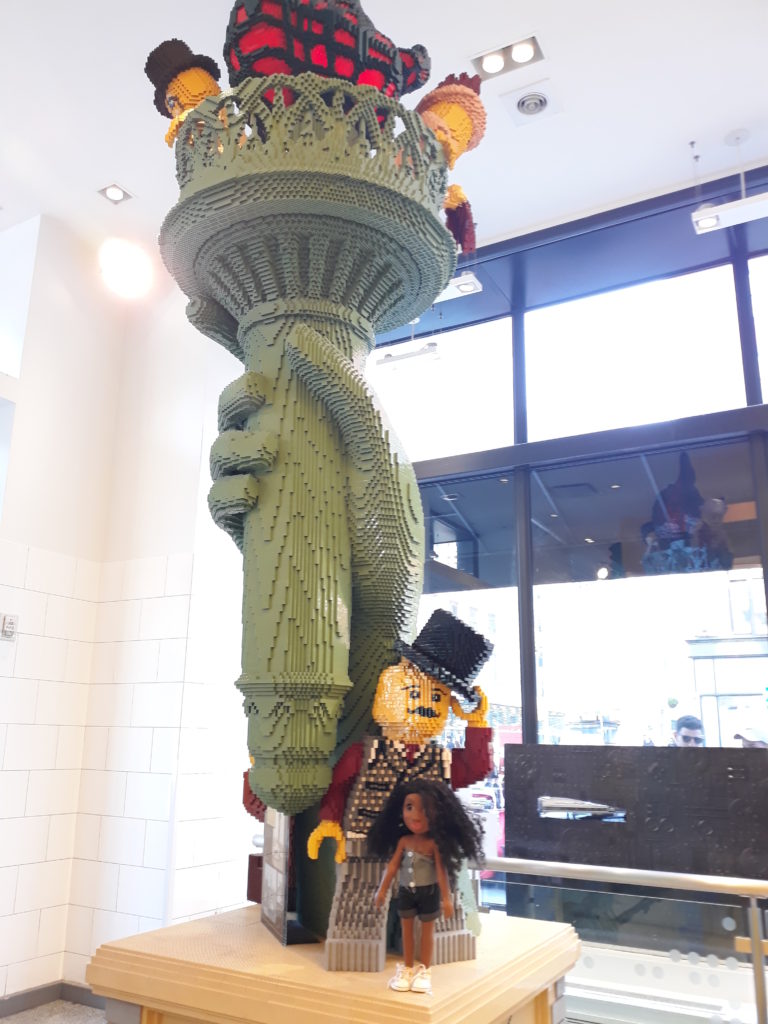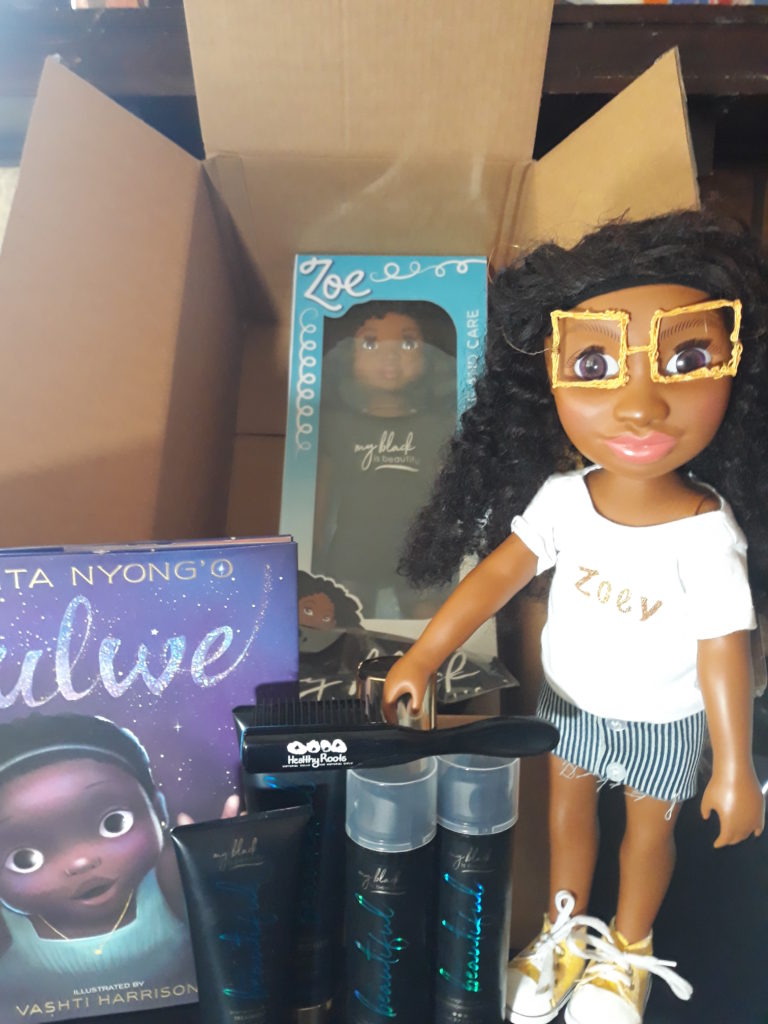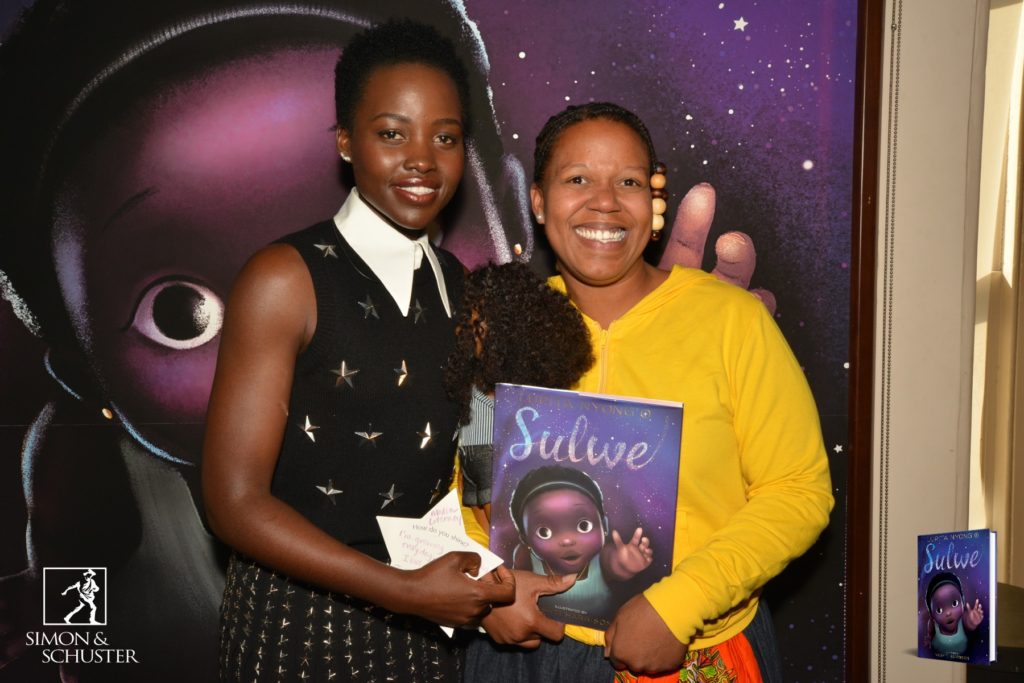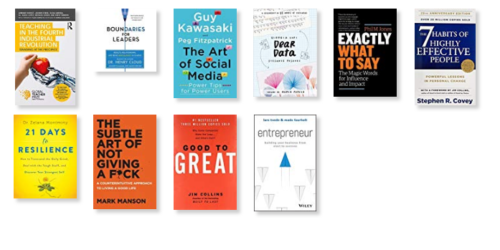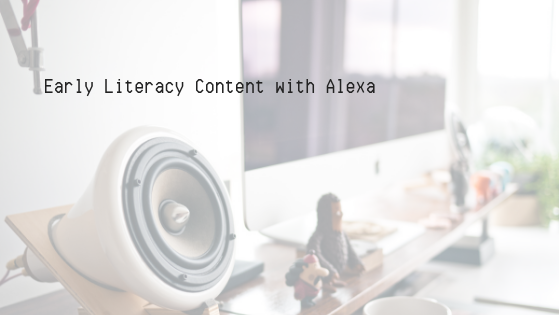Binary Beads
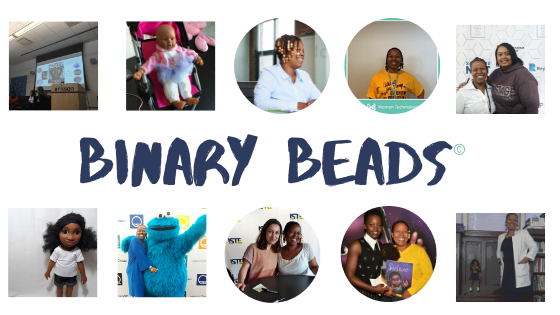
In February 2018, three events happened that springboard my journey to be an Internet of Things (IoT) maven. It was one of the 3-5 year goals; that I had outlined in June 2017.
- Lupita Nyong’ o graced the cover of Allure magazine “The Culture of Hair” Issue.
- A Texas pre-K teacher (Leigh Bishop) wore the same hairstyle as her student, and the picture goes viral.
- C.C. Busy received notice we advance to the second round of interviews for AlphaLab.
C.C. Busy is a subscription-based software company that uses voice assistants (like Amazon Alexa and Google Assistants) to help child care providers log their daily interactions. I also began tinkering with the idea of Binary Beads – the art of using binary code (like Baudot code) to write in braided hairstyles traditionally wore by little Black girls and women.
Binary Beads – the art of using binary code (like Baudot code) to write in braided hairstyles traditionally wore by little Black girls and women.
Shimira Williams
What is Baudot Code?
Baudot code is a binary code (5-bit) that uses crosses (+) and dashes (-) for teleprinter messages instead of the morse code invented by Émile Baudot in 1870. It became known as the International Telegraph Alphabet No.; the code has never been patented, but the machine was in 1874.
TEC Play at TEC Center at Erikson Institute
Before C.C. Busy, I worked at the intersection of technology and young children and saw Binary Beads as a great way to introduce young Black girls to early computational thinking. I wanted to introduce this concept to my colleagues at TEC Play: How Is Children’s Play Impacted By Technology? (April 2018) at the TEC Center at Erikson Institute during the “Does Children’s Creativity in Play Change with Technology?” panel.
Founder Photos

C.C. Busy was accepted into the 2018 cohort of AlphaLab. For our founders’ photos, I wanted to be intentional. I thought about the story of the Texas pre-k teacher, my own experience as a former child care provider. Wearing a hairstyle with Binary Beads was perfect.
I quickly learned that Binary Beads was an imperfect hairstyle for pitching – beads and microphones don’t play well together. However, I still wanted to play with the idea of Binary Beads, while on my startup journey. C.C. Busy’s story starts with my co-founder visiting the pop-up Amazon store between the American Doll and Lego stores during a family trip to Chicago.
Qai Qai forced me to boss up.
Twitter is my preferred social media platform. In late 2018, I stumbled upon Qai Qai’s account. Qai Qai pronounced (“Kway Kway”) is Olympia Ohanian’s doll (and best friend!). Yes, Olympia Ohanian (the child of Serena Williams & Alexis Ohanian Sr.) babydoll has a verified social media presence, and it’s a creative genius. It also inspired me to start “Where is Qai Qai,” a blog post with a corresponding pinpoint on a Google map to document Qai Qai’s travels. When I operated a home-based child care program, I loved using the satellite view of Google maps to explore the world with children.
Black Women Talk Tech
In February, I attended Black Women Talk Tech 2019 in New York City. As usual, my best friend came over to give me two braids that I could put my Binary Beads on. While at the conference, Qai Qai drops an exclusive interview with O Magazine, and I met Yelitsa Jean-Charles the founder of Healthy Roots a natural hair doll startup company. She had a Zoe doll with her, and I instantly thought it would be the perfect vehicle to tinker with Binary Beads. As soon as I got home, I purchased a Zoe doll from Healthy Roots.
Zoey’s Zone
Now it’s April, and I had to be honest with myself and realize I had to shift the way I thought about my work with technology and young children. So I can focus on building C.C. Busy. With that lends, I launched Zoey’s Zone, the digital home of my persona doll Condolezzaa Williams a three-year-old living with her aunt JaChelle. Zoey’s Zone would be a space I could talk about technology and children while exploring voice assistants. It also offers a way to stay connected with my early learning and maker communities. Currently, I use the Healthy Roots doll to represent Condolezza “Zoey” Williams.
Over the summer, I intentionally wore hairstyles with Binary Beads designs when possible. Zoey also started attending events with me when appropriate. Additionally, I start sharing stories about Zoey on thebeautyofstem.com website and Instagram account. I also created a Flash Briefing skill (A Byte of Style) on Amazon Alexa. Zoey’s stories are often about gardening, children’s books, coloring, and cloth-making.
Finding joy in the journey!
Twitter continues to change my life. In late September, I read two tweets that brought my visions for Zoey Zone and Binary Beads to a new level. Lupita Nyong’ o tweeted about the Meet & get your photo with Lupita Nyong’ o event for her new children’s book SULWE at the Barnes & Noble in Union Square in New York City, New York. And Healthy Roots tweeted they would be offering a limited edition Zoe with styleable hair just like your own.
Without a second thought, I brought a ticket to the event and a round trip bus ticket. I took Zoey to the book event and decided to start a new layer for the “Where in the world is Qa Qai?” map. It was a fun experience that got me thinking about how I could use maps and Binary Beads to tell better stories with Zoey using IoT technologies.
When I returned home from New York City, my new Healthy Roots doll was waiting for me. The new doll’s hair is everything. I was easily able to a box braid hairstyle then added a Binary Beads design that when decode spells Condolezza.
More recently, I started an Introduction to Machine Learning boot camp, stimulating how I think about my future work with C.C. Busy, Binary Beads, and Zoey’s Zone. I am also excited to use Zoey’s Zone to highlight the importance of representation in early childhood and IoT.
Follow the journey…
- Enable The Beauty of S.T.E.M. skill on Amazon Alexa
- Subscribe to or visit the www.thebeautyofstem.com
- On Instagram at @thebeautyofstem
